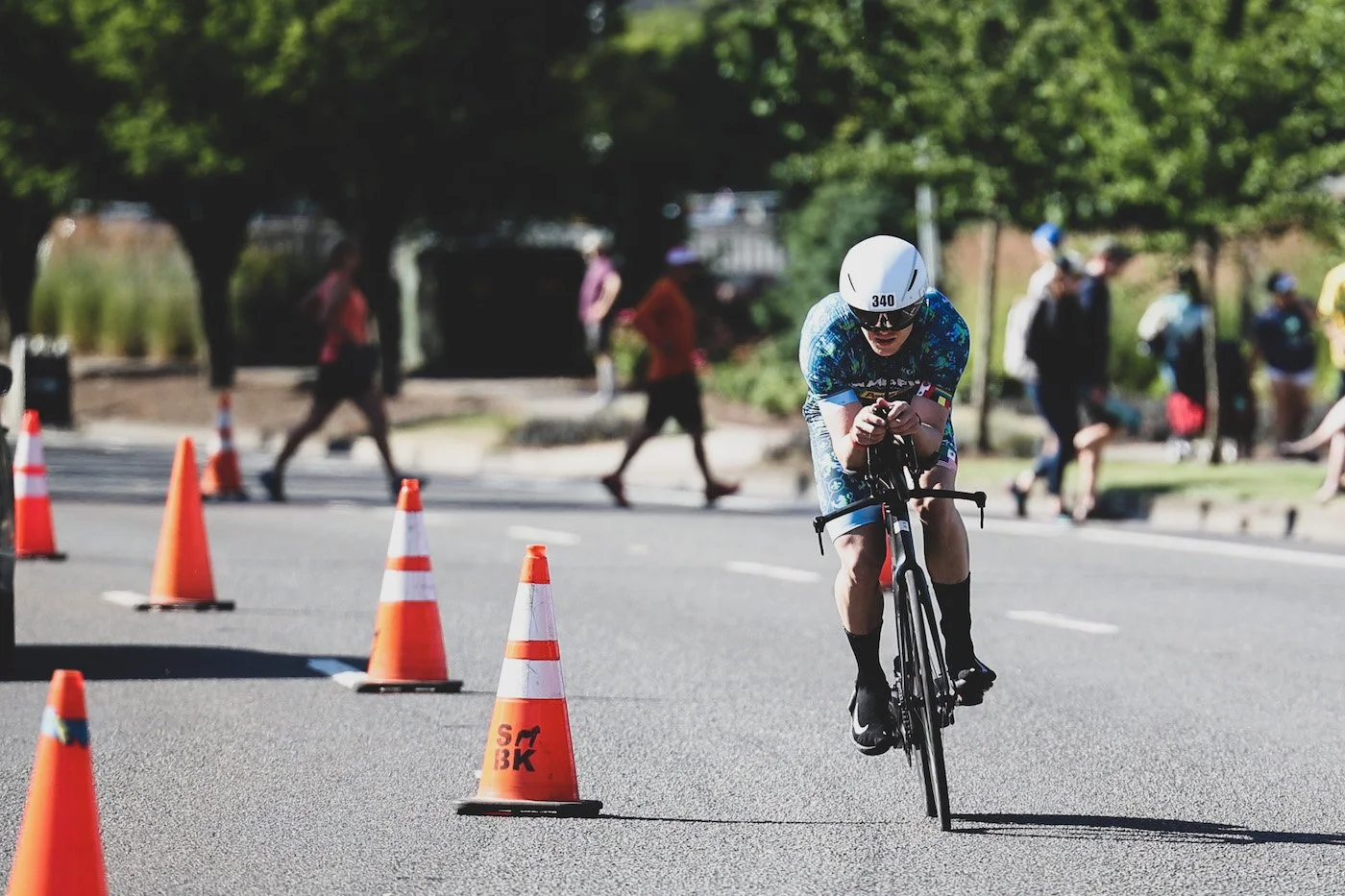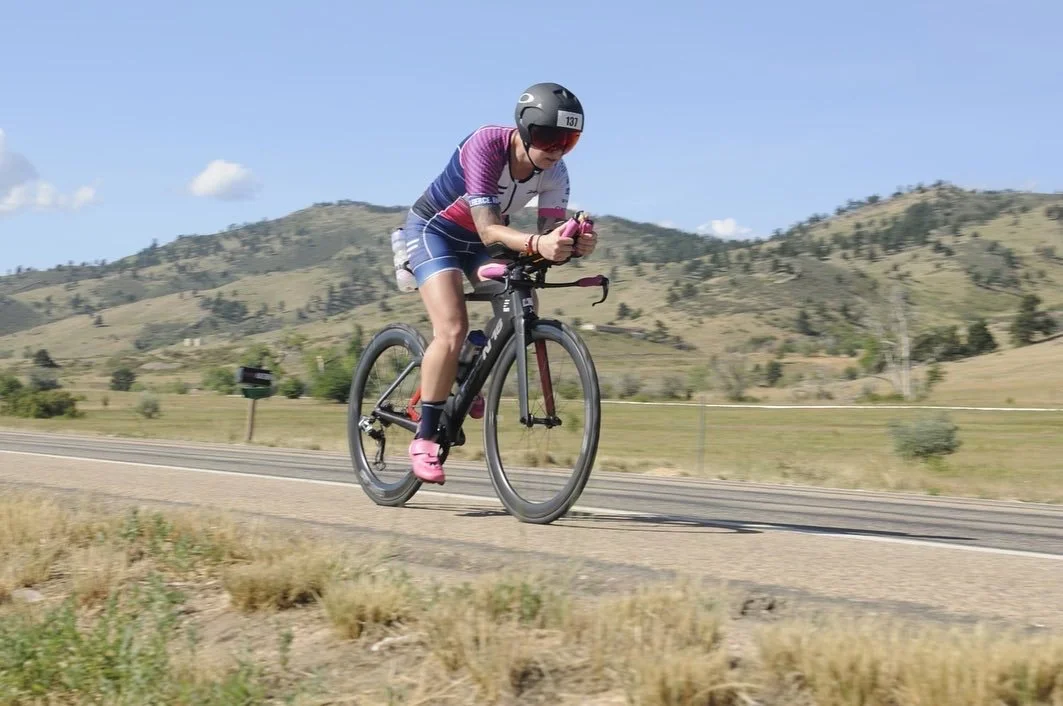How to Use Heart Rate to Calibrate your Power Meter
Race and train more effectively by using BOTH metrics
by Chris Bagg and Molly Balfe
I got a new bike recently. It's a wonderful honeymoon period and all of that: disc brakes, 12-speed electronic shifting, no cables to be seen anywhere—it’s dreamy.
You know what’s not dreamy, though? A new power meter that isn’t quite the same as the power meter on my old road bike. Is it a huge problem? Not at all. Is it a problem that I can leverage into greater understanding about myself and my abilities on the bike? It sure is. Can you do the same thing with your devices? You sure can.
A power meter, for most of us, is simply a device that measures output. When you pedal a bicycle, you are literally making power, which is measured in watts. Need a slightly less abstract description? When you press on the pedals you generate Force. If you multiply that Force by Acceleration (the cadence of pedaling) you get Power. If you hooked your crankset up to a bank of light bulbs, you could probably illuminate one or two by pedaling at a moderate effort and moderate cadence. A power meter records and communicates that effort, and like any measurement tool, it has some degree of error. In a perfect world, the power meters on the market wouldn’t deviate from each other by much more than 5%, so if one model measured 200 watts, ideally any other power meter, at the same effort, wouldn’t be lower than 190 watts or more than 210 watts.
We know that’s not true, however. Power meters can vary wildly in how they measure the force you are imparting to the pedals, which can make switching between power meters and smart trainers a fraught and frustrating process.
Luckily, there is a better way, and one that also can leave you with a fuller understanding of effort, pedaling, and your own physiology. That greater understanding can, in turn, make you a smarter and more effective athlete. Ready? Let’s begin.
External versus Internal
We’ve already established that power is an external metric. It’s something you make, like a house or a clay pot. It exists as a real thing in the real world, even if you can’t see it. The realness of it is the reality that when you pedal your bike something happens. This is the reason that many athletes and coaches like to only use power: it is something created that you can measure, and as all of us who know and love Peter Drucker know, what gets measured gets managed. That saying cuts both ways, though, and is as much a warning as it is a lesson. Just because something can’t be measured in the physical world doesn’t mean it shouldn’t be managed. Your heart rate can be measured in the physical world, but instead of a product that does something, heart rate is a reflection of effort—your heart rate is a byproduct of the watts you generate. Let’s take this concept to the metaphorical realm. Think of a hydro-electric power plant. The thing we want from a power plant is, well, power. Water pours through a dam and turns turbines, which generates power in the same way that you turning the cranks makes power. In a power plant, that energy is stored and transported. On a bike, your power drives the bike down the road. In this metaphor, heart rate is something that happens that correlates to the power being generated. Maybe the engineers allow more water to pour through the dam to make more power—the amount of water equates to your heart rate. So, even though this seems obvious, the harder you pedal, the higher your heart rate is.
Now, since your heart doesn’t change when you get a new power meter, it is the key piece of information that can help you calibrate that new power meter effectively. I know that when I’m in what we call “Z3” or our threshold zone, my heart rate will be between 151-160 or so, depending on how hydrated I am. If I want to know what my rough power zones are, I can pedal at the different heart rates I know equate to certain ranges of effort, and calibrate from there. On my old power meter, a heart rate of 151-160 would result in a power between 350 and 390 or so. On my new power meter, that number is more like 330-370. It’s lower, yeah, so my ego is a little bruised and my watts/kg is a little lower than before, but my numbers aren’t what get me results, and I think it’s a lot more important to have accurate and actionable information than a big number. So what’s your next step? Figuring out your heart rate zones.
Figuring out threshold HR
So much ink has been spilled on this subject. At Campfire, we believe that the 20’ power test - 5% to arrive at an FTP is not accurate, and results in an FTP that is too high. Here’s what we suggest:
Get in a thorough 45-60’ warmup, with a few harder 2-3’ intervals to get your body ready
Ride as hard as you can on flat terrain for 30 minutes, recording heart rate and power
Your FTP is the average power from those 30 minutes - 5%. Note that this test is 50% longer than the traditional 20’ test. If you are stuck on using the 20’ test, then we suggested subtracting 9-10%.
Grab the peak 20’ heart rate from the test and the average heart rate for the whole 30’ and average them together. The number you get is a ROUGH equivalent of threshold HR.
Campfire HR Zones
Now that you’ve got your threshold HR, set up your zones as such:
ZR (recovery) = 0—80% of threshold HR
Z1 (endurance) = 81-89% of threshold HR
Z2 (tempo) = 90-95% of threshold HR
Z3 (threshold) = 96-101% of threshold HR
Best effort/VO2max = >102% of threshold HR
Use threshold HR to find threshold power zone
Now that you’ve got your threshold HR zone, go and ride a workout in which you do something like 3x15 or 2x20 or 4x10 in that Z3 zone. Your average power from those intervals is your FTP, and a much more “functional” FTP than one derived from standard power testing, because this number is linked to a real physiological process—what your body is doing while you generate those watts. Yes, the number will be smaller than you think it should be. Get used to that feeling and use it as motivation to improve your abilities.
Caveats and bigger picture
Endurance athletes tend to like numbers. We tend to be data-driven. Remember that the goal of these events and this hobby is to improve at something, experience the joy of improvement and mastery, get and stay health, enjoy the community of other athletes, and experience competition in a safe and productive environment. All of this testing and effort serves to give you more information about how to create more speed, which is the thing we are after (that is, if getting faster is part of your goal set—it certainly doesn’t have to be part of the goal). The next step in your development is to spend time at these different heart rates and wattages and bridge those numbers to how your body feels—what your rate of perceived exertion or RPE is. Usually at Campfire we talk about threshold HR/power feeling like a 7-8 out of 10, or “hard to very hard.” Your assignment is to try using power, heart rate, and RPE to triangulate helpful information for you. What kind of helpful information? The goal of endurance sports is to go as fast as possible for the length of the event. It never helps you to go too hard at the beginning and then have to slow down below what you are capable of doing because you spent too much energy. By using heart rate, power, and RPE together, you can make better decisions about your level of effort, because you have more information. In this case, knowledge really IS power.
CONCLUSION
Nassim Taleb, the author of The Black Swan, has another pretty difficult book out there, called Antifragile. This is too small a space to adequately summarize that work, but one piece we’ll filch to make our point is that things that are antifragile thrive during chaos. Anti-fragile people and processes don’t simply survive chaotic environments, they get better in chaos. There are few more chaotic environments than a bike race or a triathlon or a cross-country race, and understanding the interplay of RPE, HR, and power helps you be anti-fragile, because you can cross-reference information and come away with better decisions. If you only use power, you lack the contextualizing information of HR and effort. If you only use HR, you won’t get the early warning effects that power can give you when you compare your output with what’s happening inside your body. And if you use HR and power but don’t bridge to RPE, you’ll always struggle to pace effectively in the real world. So start being anti-fragile and start using the tools you have at your disposal to be a faster, happier, and healthier athlete.



